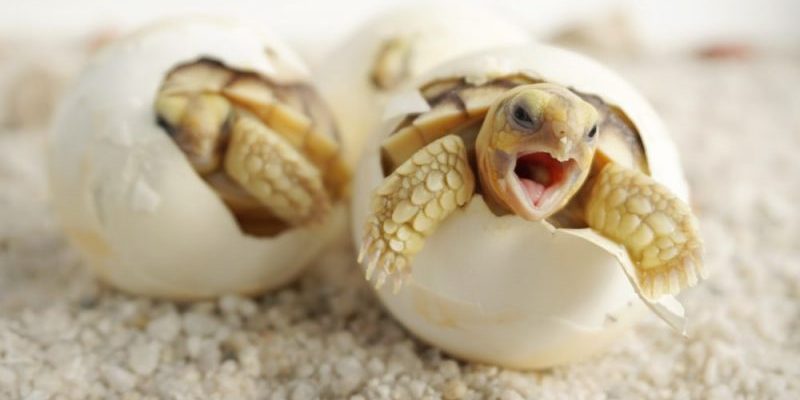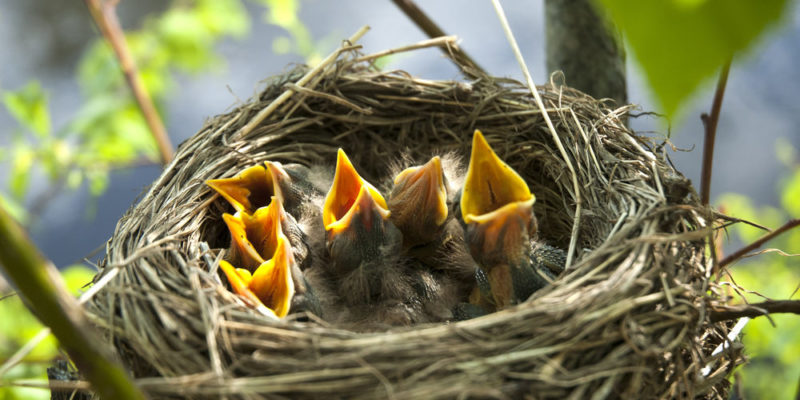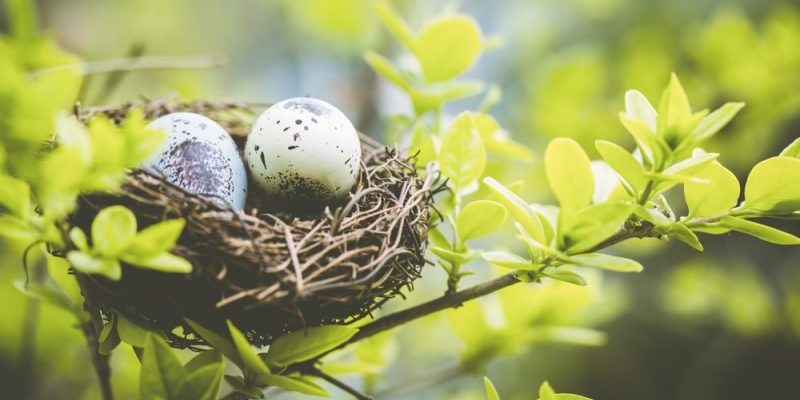We explain what oviparous animals are, how they are classified and the parts of an egg. In addition, its general characteristics and incubation.
What are oviparous animals?
The word oviparous comes from the Latin word ovum , which means "egg" and parire , which means "give birth" and is the term used to refer to those who hatch from an egg. The difference between oviparous and viviparous (their opposite) is the mode of reproduction. In turn, the oviparous can be invertebrates or vertebrates .
The oviparous ones can be fish , amphibians , insects or reptiles , gestated in an egg outside or inside the body of the female . There are also two species of mammals that are oviparous: the platypus and the echidna.
Two classes of oviparous can be distinguished: those that lay an egg that is later fertilized by the male , and those that are first fertilized by the male inside the female, who later lays the egg.
There are also those called ovoviviparous, which grow in an egg inside the female until they are fully developed and the hatching (expulsion) of the egg can occur. This is the case with snakes .
Characteristics of oviparous animals :
Evolution
Oviparous animals are considered to have an evolved type of development since the egg itself protects the young and isolates it from the environment that surrounds it.
Due to the composition of the egg, the embryo is protected from external threats from both predators and weather.
Presence of an egg

For an animal to be considered to have oviparous reproduction, the presence of an egg is necessary . It is important to clarify that this egg can be fertilized before or after the female detaches it from its interior.
An example of the first case is birds (particularly chickens) and an example of the second case is some fish that reproduce when the male presses the female on a rock to shed the eggs and are then fertilized by him with sperm.
Egg parts

The egg has three main parts:
- Shell. It is the covering that surrounds the egg, which can be flexible or rigid depending on the species.
- Albumen or clear. It is liquid and surrounds the yolk or yolk. Despite what is believed, the white is not similar to the cytoplasm of the ovum: it is composed of water and proteins and has the main function of protecting the yolk or yolk.
- Yolk or yolk. It is the cytoplasm of the zygote, which contains lipids and carbohydrates provided by the ovum.
- Membranes It is a set of membranes that surrounds and protects the embryo.
Desiccation
The egg is considered an evolution in the development stage, since it protects the young from external threats and prevents the embryo from drying out . Its rigid structure keeps the young safe, which is very useful in dry climates.
Classification of oviparous

There are two classes of oviparous:
- Internal fertilization. They are those who were first fertilized inside the females. At the time of hatching (the expulsion of the egg from the interior of the female), the eggs are deposited in one place to complete their development on their own. Thus the egg becomes a zygote. Dry eggs are characteristic of birds, reptiles, or insects. It is important to say that, in the case of oviparous with internal fertilization, they can lay eggs that are not fertilized. This is the case of hens that have not been fertilized by the rooster and, therefore, lay eggs that are not fertile (there is no chick inside, nor is it possible for them to be fertilized outside the female).
- External fertilization. The soft eggs are given in an aquatic environment and have the peculiarity of growing inside the female without being fertilized. Once the female expels the eggs from her interior, the male is fertilized by sperm. These animals are known as ovuliparous and this is the case with fish.
Number of eggs

Each species varies in the amount of egg production. A sea turtle can produce between 70 and 190 eggs while many birds only produce just under two dozen.
Egg temperature
Once the female lays the egg, she must provide her with the right temperature so that they can continue their development inside the egg. For this reason, many females incubate their eggs once they hatch.
There are, however, other species in which the females abandon them without incubating it (these cases usually occur in dry and hot climates), although they make sure to prepare a nest in a protected area from danger, generally underground, as is the case. of reptiles.
Egg care

Not all oviparous animals take care of their eggs. Many species only lay their eggs and leave, leaving their own evolution to nature.
Generally, the oviparous ones that lay the most eggs are those that, after hatching, abandon them (as is the case with turtles).
Instead, there are those oviparous that take care of their eggs after hatching . This care is usually carried out by the female, although in some species it is the males who take care of them.
Nest

Most oviparous ones lay their eggs in a nest , which can be built for the hatching of those eggs (the case of many migratory birds) or it can be a permanent nest for that species (like the hornero bird's nest). These nests can be located in trees, plants , underground or in sand.
Incubation time
The time from when an egg is laid (or hatched) by the female until the chick hatches and hatches, varies depending on the species . Some birds need about three to four months from hatching to the time when the hatchling hatches the egg.
Check out our guides to other popular topics
- Know everything about sports, it's history and the types that exist. Also, its general characteristics, examples and benefits.
- Learn everything about dogs and its main characteristics. In addition, their diet, reproduction and types of breeds.
- We explain what story is and its general characteristics. In addition, how is its structure and the elements that this narrative presents.
- We explain what an essay is and what its general characteristics are. Also, how to do a test, and the most frequent mistakes to avoid.
- We explain and summarize the history of television and how it evolved. Also, what are its characteristics and its golden age.
- We explain what the Sigmund Freud's Theories are and what its general characteristics are.
- Here are the 15 most common types of graphic organizers, their characteristics and what type of content they usually contain.
- The metaphor is a literary figure that exposes a relationship of similarity between two terms so that their concepts can be interchanged. Know the basic examples of metaphor.
- Learn everything about the history of Mexico and the main events of this country. In addition, its information and characteristics.
- Know about the history of the Computer, its antecedents, the first computers and programming languages.
- We explain what blood is, how it is composed and the blood groups that exist. Also, what are its characteristics and diseases.
- Know in detail what jurisprudence is, the types that exist and the objectives it pursues. Also, its characteristics and examples.
- We explain who William Shakespeare was, the biography and works of this renowned author. In addition, his characteristics and how he died.
- We explain what the plutocracy is and how it relates to the oligarchy. Also, what are its general characteristics and examples...
- Know everything about the 1985 Mexico City earthquake, its main causes, consequences and general characteristics.
- Learn what disclosure articles are and what their characteristics are. Also, how to write them and some examples .
The above content published at Collaborative Research Group is for informational and educational purposes only and has been developed by referring reliable sources and recommendations from technology experts. We do not have any contact with official entities nor do we intend to replace the information that they emit.
She has pursued her studies in The United States, where she has graduated in Business and Economics and is currently finishing her Master studies in International Economics and Finance. Miss. Amputee is fluent in three languages: English, Spanish and Russian and has elementary knowledge of French and Italian. She love exploring how Collaborative Research Group can become the best tool to achieve the (necessary) educational change. .
Leave a reply
Your email address will not be published. Required fields are marked *Recent post

Sport: What Is It, Types, Risks, Features, Characteristics and Examples

Dogs: Emergence, Features, Characteristics, Feeding and Breeds

Story: Definition, Elements, Structure, Features and Characteristics

